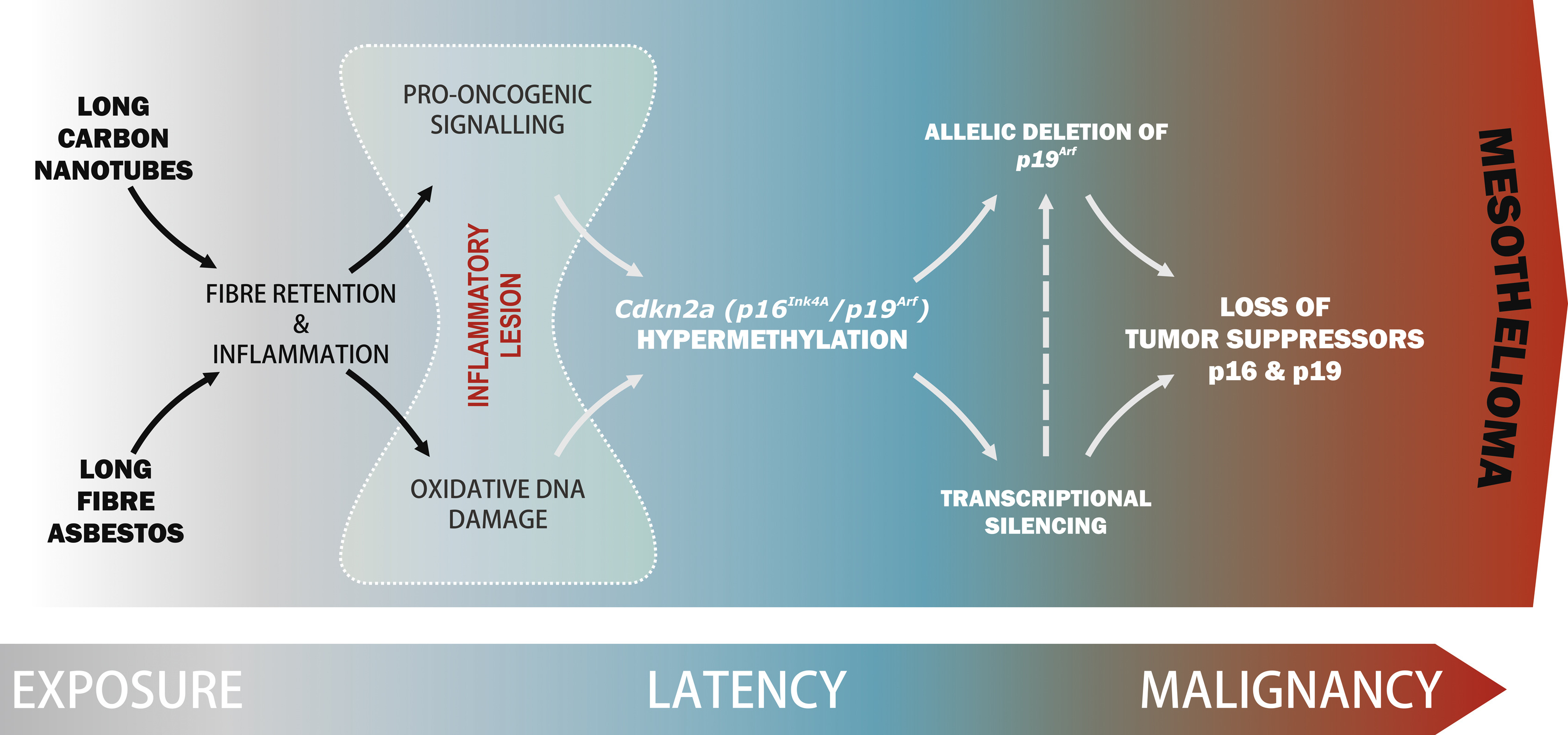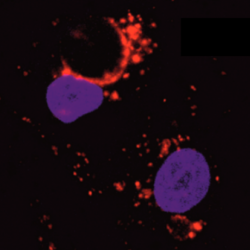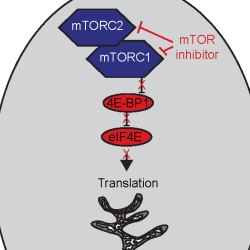Cross-Unit Programme: Mechanisms of Fibre Toxicity
Co-Leads: Prof Marion MacFarlane & Prof Anne Willis
Research Summary
It is well established that exposure to naturally occurring mineral fibres, such as asbestos, is associated with development of lung disease, including incurable mesotheliomas. However, the potential of newer manufactured nanofibres e.g. carbon nanotubes (CNTs) to trigger similar disease-associated molecular changes is under-explored. Extensive studies on the toxicity associated with exposure to fibres has led to the fibre pathogenicity paradigm (FPP); the degree of toxicity is related to dose, dimensions (diameter & length) and biopersistence of the fibre. The data suggest that nanoparticles with a high aspect-ratio (HAR) – long thin rigid fibres - are potentially toxic.
By exploiting the combined expertise of two laboratories, the aims of this cross-Unit programme are built around the hypothesis that exposure to biopersistent nanofibres with a HAR initiates a series of events that leads to the development of disease, including mesothelioma. Detailed mechanistic information is therefore essential to:
1) construct a “nanofibre-toxicity pathway”
2) identify the key molecular changes that drive the very prolonged process (~40 years) of tumour development.
3) identify novel biomarkers of exposure prior to disease progression.
By employing longitudinal studies in animal models, and comparing this with changes in patients with mesothelioma, we will able to identify at which point these alterations occurred during disease development and thus establish their position in the toxicity pathway. Through the exposure of animals to distinct types of fibres (long CNTs and different classes of engineered nanomaterials, using long asbestos fibres as a reference), we aim to determine the differences and commonalities between these agents at a molecular level and use this information to understand the potential hazards associated with human exposure to CNTs.
The data generated through these integrated projects will increase our understanding of the processes of disease development associated with pathogenic fibre-induced toxicity, provide new biomarkers to assess the exposure of the population to potential hazards and inform the future ‘safe by design’ of new classes of nanomaterials.
Selected Publications
1. Felley-Bosco E & MacFarlane M. Asbestos – new insights in the era of engineered nanomaterials. Chem. Res. Toxicol. in press (2018).
2. Chernova T, Murphy FA, Galavotti S, Sun XM, Powley IR, Grosso S, Schinwald A, Zacarias-Cabeza J, Dudek KM, Dinsdale D, Le Quesne J, Bennett J, Nakas A, Greaves P, Poland CA, Donaldson K, Bushell M, Willis AE, MacFarlane M. Long-Fiber Carbon Nanotubes Replicate Asbestos-Induced Mesothelioma with Disruption of the Tumor Suppressor Gene Cdkn2a (Ink4a/Arf). Curr Biol. 27, 3302-3314.e6 (2017).
3. Chernova T et al. Molecular profiling reveals primary mesothelioma cell lines recapitulate human disease. Cell Death Differ. 23, 1152-64 (2016).
4. Donaldson K, et al. Pulmonary toxicity of carbon nanotubes and asbestos - similarities and differences. Advanced Drug Delivery Reviews 65, 2078-2086 (2013).
5. T Chernova, et al: Exposure to pathogenic fibres causes pro-oncogenic changes in the pleural cavity. Toxicology Letters 229: (2014).
6. FA Murphy, et al: Long-fibre carbon nanotube- and asbestos-induced pleural lesions exhibit a common molecular signature. Toxicology Letters 229:S196 (2014).
7. T Chernova, et al: Role of pro-inflammatory cells in mesothelial cell oncogenesis induced by toxic fibres. Toxicology Letters 229:S59 (2014).







